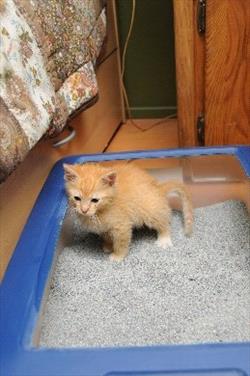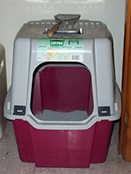Q: I’m getting a kitten. What kind of litter box should I get?
A: Making the right litter box choice is more than just appearance. It plays an important role in cat behavior and house-soiling prevention.
Size Matters
- Choose a larger box. Cats prefer a spacious area for digging and covering.
- Ensure the box can comfortably accommodate your cat’s size, ideally 1 1/2 times the length of the cat from nose to base of the tail.
- Cats should be able to turn around in the box without touching the sides.
Litter Depth and Type:
- Cats have a natural digging behavior.
- Two to three inches of litter allows them to cover efficiently.
- Non-scented, clay, clumping litter is often best.
- Some cats may not like crystals, pellets, or wood shaving-type litter.
Types of Litter Boxes
- Self-cleaning boxes can be convenient but might scare some cats.
- Hooded boxes provide privacy, but make sure there is proper air circulation.
- Open boxes are generally more accepted but provide less privacy.
|
|
|
How Many Boxes?
- Follow the golden rule: number of cats + 1.
- In multi-cat households, put boxes in various locations to give options and to prevent territorial disputes.
Location is Key
- Choose a quiet, low-traffic area.
- Have a minimum of one box per level of the house.
- Keep the box away from feeding zones.
- Ensure easy access and escape routes.
Maintenance
- Traditional boxes require manual cleaning.
- Choose a box that is easy to clean.
- Daily scooping keeps the box fresh and encourages usage.
- The box should be emptied and washed weekly with non-scented dish detergent.
- Litter should be replaced as needed.
- Avoid using litter box liners because some cats do not like the feel or smell.
Special Considerations
- For cats that tend to kick litter out, use high-sided boxes and consider placing a litter-trapping mat under the box.
- Elderly or arthritic cats might benefit from ramps or lower sides.
- Some cats might be sensitive to certain box materials or odors.
Every cat is unique. It might take trial and error to find the perfect fit.






